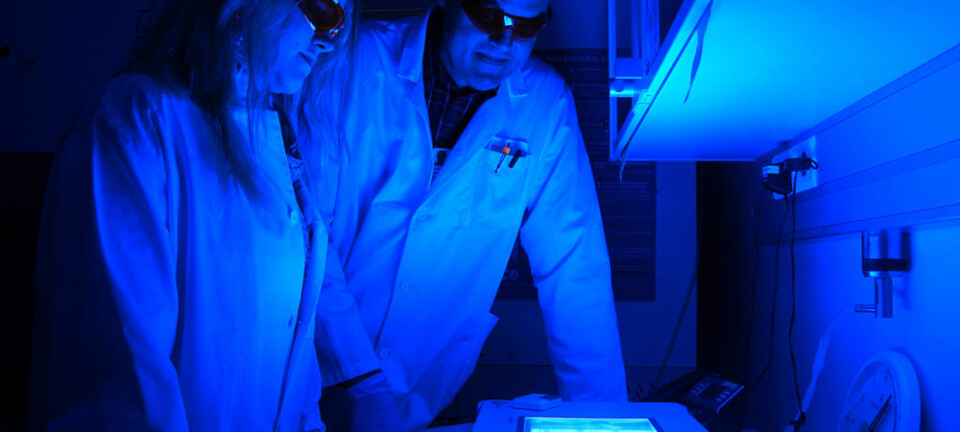
Cancer patients tend to be more injury prone
The risk of injury increases for people with a cancer diagnosis, according to a Swedish study. Randi Englund got an infection after an operation, but many encounter accidents that are not related to the disease.
It is bad enough for anyone to suspect they have cancer. But we are also more likely to suffer some injury when we have a possible cancer diagnosis hanging over us, and right after receiving the diagnosis.
Injuries are one of the biggest causes of death among cancer patients. Only half of the injuries are related to complications and faulty medical treatment.
They also run the risk of hurting themselves in falls, car accidents and suicide attempts during the time before and after being diagnosed with cancer, shows a new study published in the journal BMJ.
“It was shocking to get the diagnosis,” says Randi Englund who was found to have breast cancer four and a half years ago. She got a bad infection after one of two breast cancer operations, but is now back at her job again.
Risk rise two to seven times

The researchers found out that the persons’ risks of suffering an injury related to treatment was seven times greater during the diagnostic period than during the pre-diagnostic period.
Typical examples are bleedings, infections and other complications. This is not too unexpected, as many of these injuries can be linked to taking samples of blood or tissue, and medical treatment.
What might come as a surprise is that the risk of completely other injuries also rises so much.
“The risk of incurring other injuries nearly doubles compared to the same period the year before,” says Research Fellow Qing Shen at Sweden’s Karolinska Institute.
This includes both self-inflicted injuries and accidental ones. The total risk of a cancer patient suffering an injury is two percent.
Intestinal bacteria
Randi Englund (62) was burned out after a divorce and on sick leave a few months prior to getting diagnosed with breast cancer. She did not have to wait long for a diagnosis after being examined.
A biopsy was taken straight away. She was diagnosed in just a half hour an underwent an operation at St. Olavs Hospital in Trondheim two weeks later.
“I was surprised by how fast it all went. I learned that I had good odds and was in fit condition. I thought immediately that this was something I was going to overcome. Then I had to have a second operation.”
Then she suffered a bad infection with high fever for several weeks, and antibiotics were not helping.
“They found out it was caused by intestinal bacteria in the wound. I thought this could have been avoided. You expect things to be sterile at a hospital,” she says. Englund filed a complaint in against the surgeon.
It took seven weeks before she was healthy enough to have chemotherapy for the breast cancer. Now she is back in full-time work as a store manager at Coop on the island of Frøya.
Fatigue a symptom
Deputy Secretary General Ole Alexander Opdalshei at the Norwegian Cancer Society finds it interesting that the risk of injuries at the time around a cancer diagnosis is so elevated.
“Obviously the risk of treatment injuries increases when a person is treated. But receiving a cancer diagnosis is dramatic enough and can be mentally challenging for many.”
He suggests that one of the causes of other injuries could be that higher stress levels make patients less attentive to things in their daily life. They are focused on the outcome of their disease.
“The study does not answer why the risk of injuries multiplies, so more research is needed to find the reasons and then the next step is to see how the injuries can be prevented.”
More easily fatigued
Feeling exhausted and tired are important but diffuse symptoms of cancer, Opdalshei points out. And being in such a condition makes it easier to stumble and fall, for example.
Randi Englund did not know that cancer patients run a higher risk of other injuries than those related more directly to being a patient.
“But I notice that my energy is not what it was. I get tired more quickly and notice that my concentration is poorer,” she says.
Over 700 000 patients
The new study comprised 721 000 patients in the Swedish Cancer register who were diagnosed for the disease in from 1991 to 2009. The researchers linked information about these persons with the patient register and diagnoses of persons being discharged from hospitals.
To isolate whether the cancer diagnosis had an impact, they checked the number of various injuries prior to and after the diagnosis with the same persons in the same period the previous year.
A total of 7,300 persons had treatment-related injuries in this period when they were diagnosed with cancer. But even more, 8,330, were hospitalised with other injuries in this period.
Lumping these sums together, this means that two percent of persons stricken with cancer get injured in one way or another in the eight months around the time of receiving their diagnosis.
Treatment-related injuries
Patient injuries are often caused by mistakes in treatment or side-effects of medications. The rise in such injuries was greatest before the patient was fully diagnosed.
Infections, surgical wound complications and bleeding were the most common of these. Such problems are known to most common amongst patients with colon cancer, prostate cancer and breast cancer.
But in this study the risk of treatment-related injuries was highest for patients who were young, of high socio-economic status, had cancer in the central nervous system or previously suffered a mental disorder.
Cuts and traffic accidents
Non-treatment injuries can be mishaps in the home, outdoor accidents and self-induced injuries. But injuries that were unintentional were the most common.
Typical injuries are cuts and puncture wounds, bruises and dislocated shoulders.
“In addition come injuries from falling down and car accidents,” says the research fellow, Qing Shen, who was the first author of the study.
The risk of such injuries spiked from four weeks before to two weeks after the diagnosis was made.
The cancer patients who were most frequently injured in such ways were ones with cancer in the central nervous system, leukaemia or lung cancer. Those who were least in jeopardy of injuries were the ones who had non-melanoma skin cancer.
Older persons were particularly at risk, as were those with a low socioeconomic status or who had previously had mental problems or other injuries. The risk was greatest in the last two weeks before the diagnosis was made.
Swallowing poison or cutting themselves
But some persons injure themselves intentionally.
Some of the patients were treated in hospitals after swallowing sharp objects or various poisons.
Patients who have a recent cancer diagnosis run a higher risk of both suicide and death by accident.
The average age of the cancer patients was 69 years.
What is the cause?
The scientists still don't know what causes this increase.
"But we assume that a potential cancer diagnosis and receiving the final results could lead to poor concentration and a reduced cognitive function," Shen writes in an email.
Psychiatrist and professor emeritus Øivind Ekeberg from The University of Oslo confirms this.
"These kinds of injuries are probably due to stress reactions in patients being screened for cancer," Ekeberg says to the Journal of the Norwegian Medical Association.
Additionally, the process before a diagnosis is given, can lead to stress related psychological symptoms, whether the patient is told she has or does not have cancer. The risk for other non-treatment related injuries was greatest before they were given a diagnosis.
Uncertainty is the worst part
"This may indicate that the uncertainty concerning the diagnosis can be more stressful than actually receiving a negative message," Ekeberg says to the journal.
Cigarettes and alcohol may have played a part in some of the accidents, which is why the researchers analyzed cancers that can be caused by alcohol or smoking.
Ekeberg thinks this study gives reason to recommend a more systematic mapping of potential psychiatric problems in cancer patients both before and after a diagnosis is given.
--------------------------------------
Read the Norwegian version of this article at forskning.no
Translated by: Glenn Ostling








